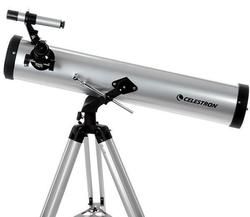Going beyond the telescope
 Imagine a glass rod placed in air has a refractive index of
and a length of
. One end of the rod is shaped as a convex surface with radius of curvature
. Suppose we would like to use it to make our very own telescope from this glass rod, how should the other end be shaped? Be as precise as possible in your answer.
Imagine a glass rod placed in air has a refractive index of
and a length of
. One end of the rod is shaped as a convex surface with radius of curvature
. Suppose we would like to use it to make our very own telescope from this glass rod, how should the other end be shaped? Be as precise as possible in your answer.
Details and Assumptions :
-
For those who are unaware of the working principle of the telescope, it will allow a far away or distant object along the principle axis to have its image formed within the telescope system.
-
The answer computed should be rounded to the nearest integer.
This section requires Javascript.
You are seeing this because something didn't load right. We suggest you, (a) try
refreshing the page, (b) enabling javascript if it is disabled on your browser and,
finally, (c)
loading the
non-javascript version of this page
. We're sorry about the hassle.
This problem is based on using two plano-convex lens back to back, in which case the focal length for the 10 cm radius lens is 20 cm, and for the 5 cm radius lens is 10 cm. Presumably, those two are combined, along with the distances from the "midplane" of the lens to the curved ends, adding another 10 cm and 5 cm for a total of 45 cm. But this is a SOLID glass rod, so the correct answer really should be convex 20 cm, which is not offered as a choice. See further details in the report section.